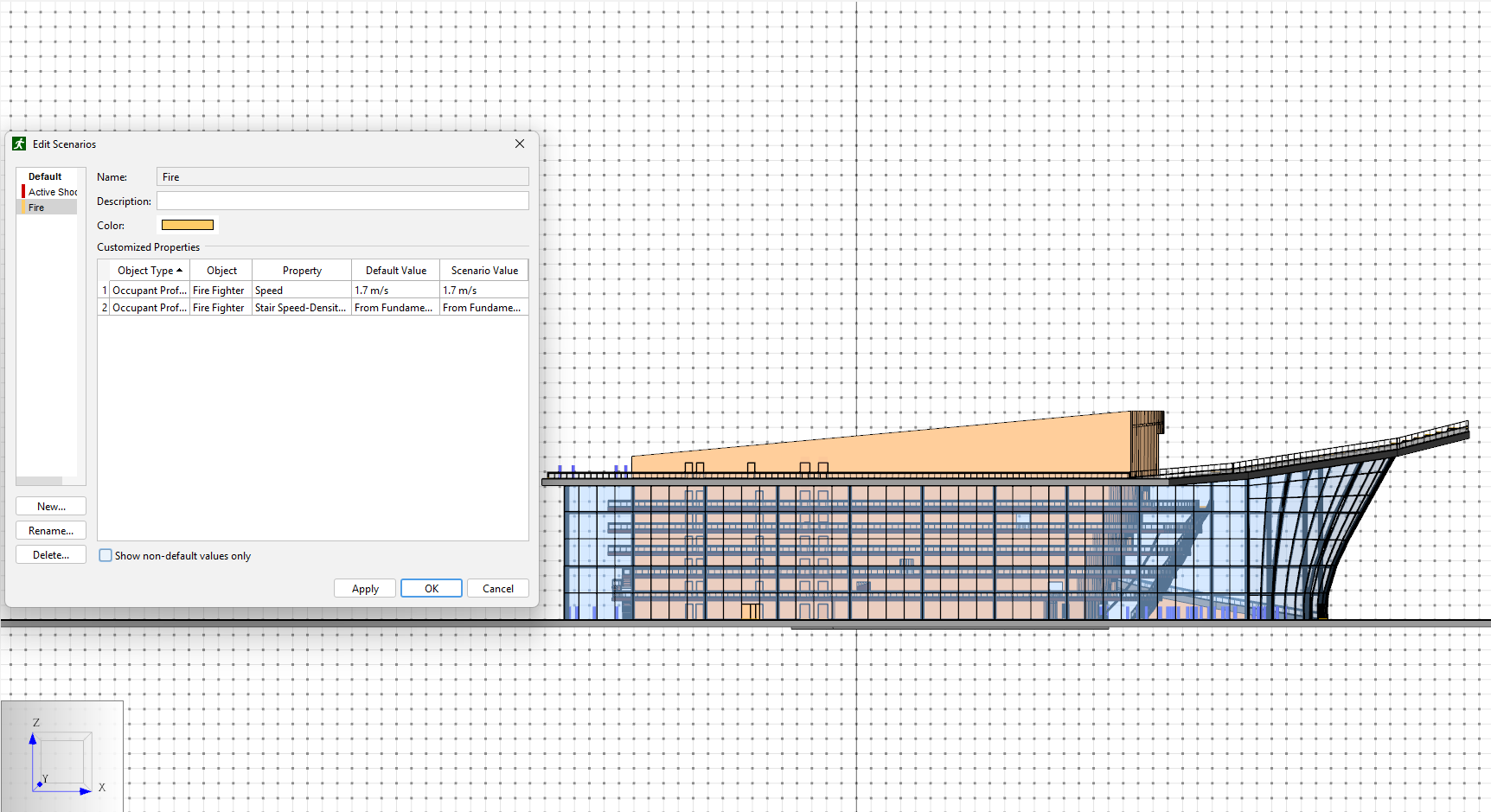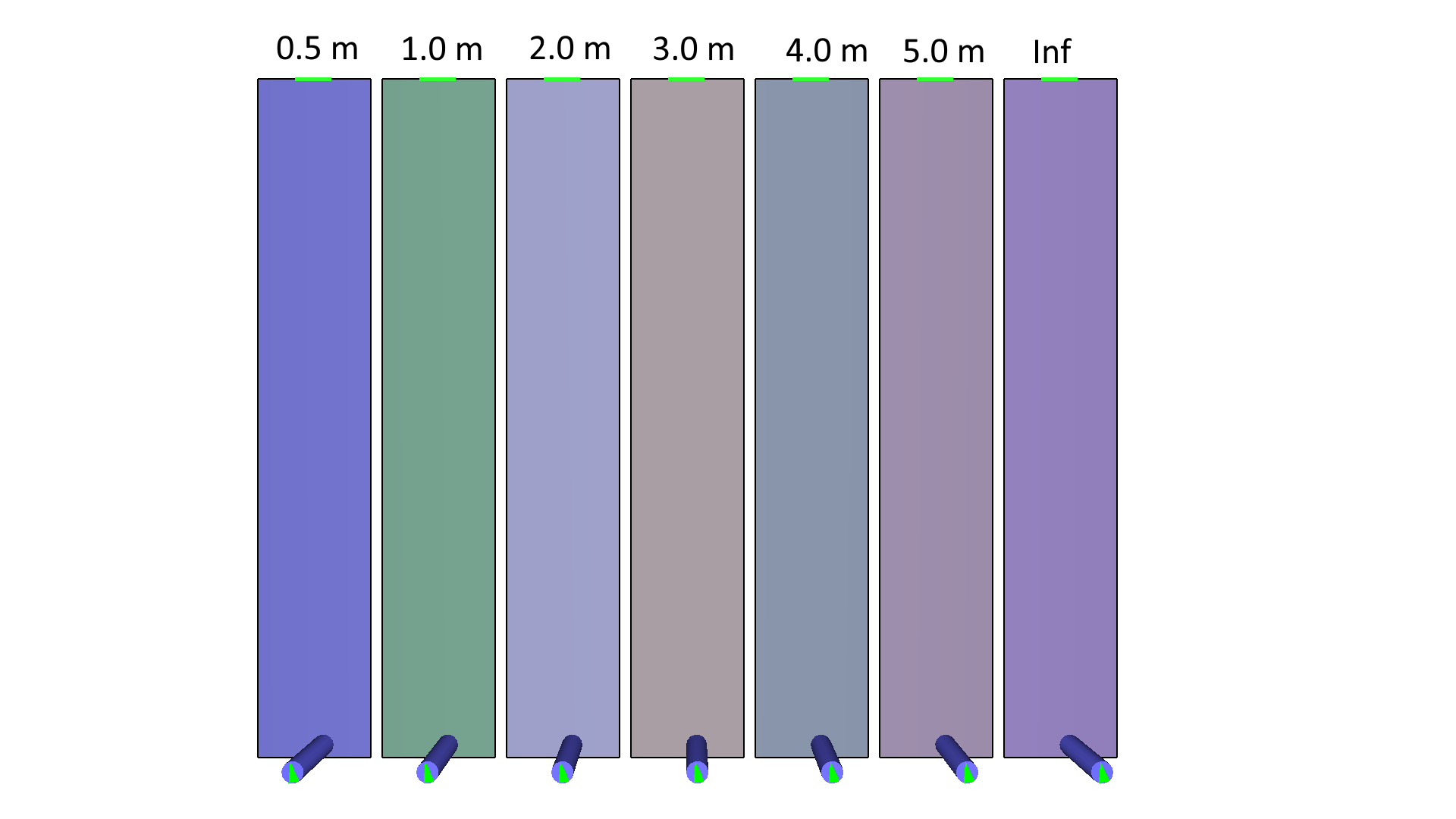Life Safety Analysis
From detailed scenario development to advanced analysis tools, Pathfinder helps engineers simulate realistic occupant movement and assess egress performance under a wide range of conditions.
Scenarios
With scenario capabilities, consider the full range of threats to wellbeing in your projects. For some emergencies, occupants could change their behavior to shelter in place.

There are no hard-coded limits to the number of scenarios.
SFPE mode
The SFPE mode uses the set of assumptions presented in the SFPE Engineering Guide to Human Behavior in Fire (2019) and can deliver ASET and RSET values extremely similar to hand calculations. In this simulation mode, the mechanism that controls movement is the door queue; doors impose a flow limit and velocity is controlled by density.

The density-velocity function is known as the "SFPE Fundamental Diagram".
See how it compares
View our example that compares NFPA 130, SFPE, and Pathfinder.
Verification and validation
We validate and publish our own tests of Pathfinder against research data to boost your confidence in the model's validity. Run our test suite or create your own model suitability data using our advanced Results analysis toolkit.

Monte Carlo
Pathfinder’s Monte Carlo feature lets users quickly see how random inputs can change the results of a fixed model. This might be useful for testing the sensitivity to initial conditions (starting position, profile parameter assignment, etc.) and/or to help with validation of distributions (normal, uniform, log-normal, etc.) used for input parameters.

When running multiple scenarios or Monte Carlo variations, several files are created that provide combined results across all variations.

Robust output options
Pathfinder's output options are tailored to support designers, offering both flexibility and precision in post-simulation analysis. Whether you're validating egress times, occupant flow, or density thresholds, Pathfinder provides detailed results in easily exportable CSV and JSON formats. These formats are ideal for integration into compliance reports, custom dashboards, or further analysis using external tools like Excel, Python, or Power BI.

This level of customization ensures that life-safety designers get the exact data they need to demonstrate code compliance, support AHJ (Authority Having Jurisdiction) review, or optimize design decisions with confidence.
Advanced scripting
Pathfinder offers powerful flexibility for life-safety designers through its robust scripting APIs, enabling customized control and advanced analysis at every stage of a project.

For post-simulation analysis, the Results Scripting API supports Python scripting, making it easy to automate the processing of output data, generate custom visualizations, or extract key performance indicators for compliance documentation.
Together, these scripting tools empower users to tailor simulations to their unique regulatory requirements and design goals, streamlining both scenario development and results interpretation.
Summary
Features like "SFPE mode" ensure alignment with established engineering methodologies, while built-in verification and validation resources support code compliance and stakeholder confidence. For probabilistic analysis, Monte Carlo simulation capabilities allow users to explore variability in occupant behavior and initial conditions. With configurable outputs in CSV and JSON formats, and scripting APIs for both simulation control and post-processing, Pathfinder provides the precision, adaptability, and transparency needed to support life-safety decisions in complex building designs.
Get the Industry Leading Movement Simulation Tool
Invest in a powerful ally that empowers you to deliver innovative and effective movement designs, while saving time and resources.
- task_alt Reduce project costs
- task_alt Analyze data quickly
- task_alt Communicate quickly with clients
- task_alt Create better designs